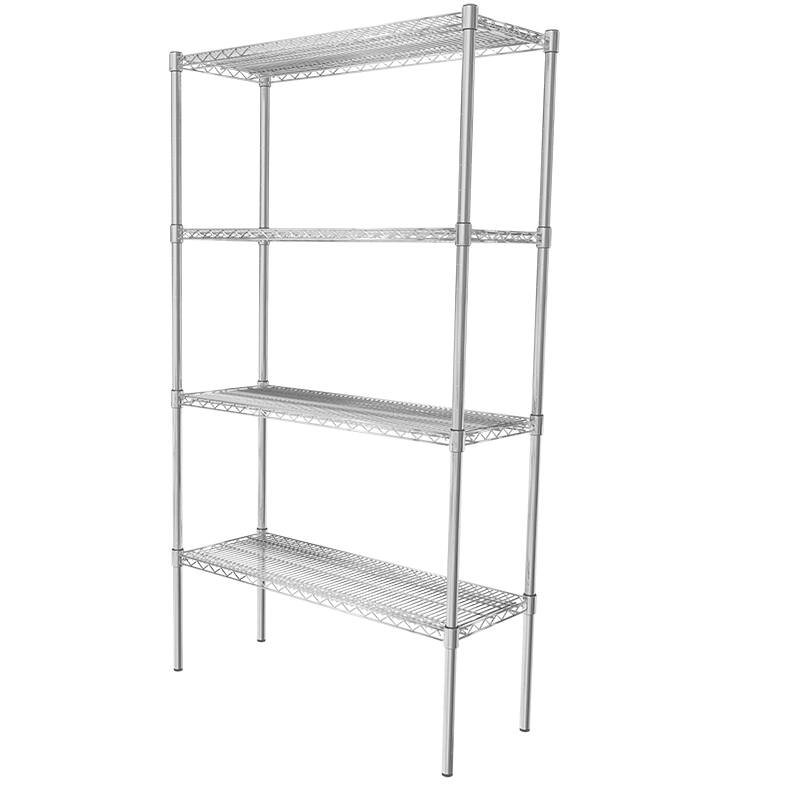Businesses across various industries rely heavily on effective storage solutions to maintain organized operations and maximize productivity. When considering bulk procurement of storage holders, companies must evaluate multiple critical factors to ensure they make informed decisions that align with their operational needs and budget constraints. The selection process involves analyzing material quality, durability standards, capacity requirements, and supplier reliability to achieve optimal value and performance outcomes.
The foundation of any reliable storage system lies in the quality of materials used in manufacturing. Stainless steel grades such as 304 and 316 offer superior corrosion resistance, making them ideal for environments exposed to moisture or chemical substances. Businesses operating in food service, healthcare, or pharmaceutical sectors should prioritize these higher-grade materials to ensure compliance with industry standards and maintain hygiene protocols.
Carbon steel alternatives provide cost-effective solutions for dry storage applications where corrosion resistance is less critical. However, these materials require proper coating treatments such as powder coating or galvanization to extend their lifespan and maintain structural integrity over time. Understanding the specific environmental conditions where storage holders will be deployed helps determine the most appropriate material selection.
Wire diameter directly impacts the structural strength and weight capacity of storage holders. Thicker gauge wires, typically ranging from 8 to 12 gauge, provide enhanced durability and can support heavier loads without deformation. Businesses handling heavy inventory items or equipment should prioritize thicker wire specifications to prevent premature failure and ensure long-term reliability.
The welding quality at connection points significantly affects overall structural integrity. Professional-grade welding techniques create seamless joints that distribute weight evenly across the frame, preventing stress concentration points that could lead to failure. Examining weld quality during the evaluation process helps identify suppliers who maintain consistent manufacturing standards.
Most commercial storage holders are available in standardized dimensions that align with common warehouse shelving systems and storage requirements. Standard widths typically range from 18 to 60 inches, while depths vary from 12 to 24 inches to accommodate different product sizes and storage configurations. Understanding these standard dimensions helps businesses plan their storage layouts more effectively.
Custom sizing options become essential when dealing with unique storage requirements or specialized equipment. Many manufacturers offer modification services to create storage holders that fit specific spatial constraints or accommodate particular product dimensions. However, custom modifications often involve longer lead times and higher costs that must be factored into procurement planning.
Vertical space utilization becomes crucial in maximizing storage efficiency, particularly in facilities with limited floor space. Storage holders designed with stackable features allow for multi-level configurations that dramatically increase capacity within the same footprint. Businesses should evaluate the maximum safe stacking height and ensure adequate clearance between levels for easy access and maintenance.
Adjustable height mechanisms provide flexibility to accommodate varying product sizes and changing inventory requirements. These features prove particularly valuable in dynamic storage environments where product mix and sizing may change seasonally or based on market demands. The adjustment mechanisms should operate smoothly and lock securely to prevent accidental displacement during use.
Understanding the difference between static and dynamic load ratings is essential for proper storage holder selection. Static load capacity refers to the maximum weight that can be safely supported when the unit is stationary, while dynamic ratings account for forces generated during loading, unloading, and movement operations. Dynamic ratings are typically lower than static ratings due to the additional stress factors involved in material handling operations.
Safety factors built into load ratings provide operational margins that account for unexpected loading conditions or gradual material degradation over time. Reputable manufacturers typically incorporate safety factors of 2:1 or 3:1, meaning the actual failure point is two to three times higher than the published working load limit. This engineering approach ensures reliable performance even under challenging operational conditions.
Repeated loading and unloading cycles create fatigue stress that can gradually weaken storage holders over time. High-quality units are designed and tested to withstand hundreds of thousands of load cycles without significant degradation in performance. Businesses with high-turnover inventory should prioritize storage holders with proven fatigue resistance to minimize replacement costs and operational disruptions.
Environmental factors such as temperature fluctuations, humidity levels, and exposure to chemicals can accelerate material degradation and reduce service life. Storage holders intended for outdoor use or harsh environments require enhanced protection through specialized coatings or material treatments. Evaluating the expected service environment helps determine appropriate durability specifications.

Reputable suppliers maintain comprehensive quality management systems that ensure consistent product quality and compliance with industry standards. ISO 9001 certification indicates that a manufacturer follows established quality control procedures and maintains documented processes for continuous improvement. Businesses should verify these certifications and request quality documentation as part of their supplier evaluation process.
Industry-specific certifications such as NSF approval for food service applications or UL listing for electrical safety provide additional assurance of product suitability for particular use cases. These certifications involve rigorous testing and ongoing compliance monitoring to ensure products meet or exceed established safety and performance standards.
Bulk orders often require extended lead times, particularly for custom configurations or during peak demand periods. Suppliers should provide realistic delivery schedules and maintain adequate manufacturing capacity to meet committed deadlines. Businesses should factor lead times into their procurement planning to avoid operational disruptions due to delayed deliveries.
Some suppliers offer inventory management programs that maintain stock levels based on historical usage patterns and projected demand. These programs can reduce procurement administrative burden and ensure consistent availability of storage holders when needed. However, businesses should carefully evaluate the terms and conditions of such programs to ensure they align with their operational requirements and financial constraints.
The initial purchase price represents only a portion of the total cost associated with storage holders over their operational lifetime. Maintenance requirements, replacement frequency, and operational efficiency impacts all contribute to the overall cost equation. Higher-quality units with premium materials may justify their increased initial cost through extended service life and reduced maintenance requirements.
Installation costs, including labor and any required modifications to existing storage systems, should be factored into the total investment calculation. Some storage holders require specialized installation procedures or additional support structures that can significantly impact the overall project cost. Obtaining detailed installation requirements from suppliers helps develop accurate budget projections.
Bulk procurement typically offers opportunities for significant cost savings through volume pricing tiers and negotiated contracts. Suppliers often provide graduated pricing schedules that reward larger order quantities with progressively lower unit costs. Businesses should evaluate their total annual requirements to determine optimal order quantities that balance inventory carrying costs with volume discounts.
Long-term supply agreements can provide price stability and guaranteed availability, particularly valuable in volatile market conditions. These contracts may include provisions for scheduled price adjustments, minimum order commitments, and exclusive supplier arrangements. Careful contract negotiation ensures that both parties benefit from the arrangement while maintaining flexibility for changing business needs.
High-quality commercial storage holders typically provide 10 to 15 years of reliable service under normal operating conditions. The actual lifespan depends on factors such as material quality, load frequency, environmental conditions, and maintenance practices. Stainless steel units in controlled environments often exceed 20 years, while carbon steel units in harsh conditions may require replacement after 8 to 10 years.
Calculate the maximum weight of items that will be stored, including packaging and containers, then add a safety margin of 25 to 50 percent. Consider both the weight of individual items and the total distributed load across the entire storage holder surface. Consult with the manufacturer's engineering specifications to ensure the selected capacity rating exceeds your calculated requirements with appropriate safety factors.
Regular visual inspections should identify signs of wear, corrosion, or damage that could compromise structural integrity. Clean storage holders periodically using appropriate cleaning agents that won't damage protective coatings or finishes. Check all connection points and fasteners for tightness, and address any issues immediately to prevent progressive deterioration. Document maintenance activities to track performance trends and plan replacement schedules.
Many modular storage systems allow for expansion and reconfiguration to accommodate changing requirements. However, modifications should only be performed using compatible components from the original manufacturer to maintain structural integrity and safety ratings. Consult with the supplier's technical team before making any modifications to ensure compliance with design specifications and safety standards.
 Hot News
Hot News
Copyright © 2024 Top Trust Biotechnology Co., Ltd All Rights Reserved Privacy policy